It’s been 32 years since I visited Yellowstone National Park, USA – America’s great achievement in land protection and conservation. Thirty-two years later I think it is even better than I remembered. Although it’s probably me that has changed. I am so much more aware of how fragile nature is, and how astonishing. Come along with me as I share my visit to Yellowstone National Park, USA.
Road Trip
We left our home in Washington State and drove more than nine hours to Butte Montana. It was important we put in a long day on our first day of this month long road trip – giving us more time in the national park. We arose early in Butte and headed to the North Entrance of Yellowstone. There are four entrances to the park. We entered the park around 9am, and on this late September day there was no wait. We stopped to take the obligatory picture at the sign, before heading on for a very full first day in America’s first national park, Yellowstone National Park, USA.
History
I searched some history about this amazing park and here is what I learned;
“Yellowstone National Park was established on March 1, 1872, by President Ulysses S. Grant, becoming the world’s first national park and preserving its unique geothermal features and wildlife for the people. The park’s creation was a result of the Washburn-Langford-Doane expedition of 1870, which explored the region and captured public imagination, leading to legislation to protect the area from settlement and resource extraction. For millennia before its establishment, Yellowstone was home to various Native American tribes, who used the area for hunting, gathering, and spiritual purposes, with evidence of their presence dating back at least 11,000 years.”
“Formed by a hotspot, a stationary plume of hot mantle rock that rises to the Earth’s surface, causing repeated explosive volcanic eruptions and caldera collapses as the North American tectonic plate moves over it. The process began about 2.2 million years ago, creating three enormous calderas through massive eruptions of thick lava and ash, with the most recent occurring 640,000 years ago, which is the basis for the present-day Yellowstone Caldera”
How Many Days
We did a pretty thorough exploration of the park in two days. Don’t try to see the park in one day…traffic can be bad, especially in the summer, and distances between popular sites can be surprising. You will want to stop to see animals (and you will see lots of animals) and you will want to have enough time to really savor the beauty of the place. If you are interested in hiking, you might want a day or two more.
Mammoth and the North Entrance
We entered the park from the north and headed to Mammoth first. The first major entrance for Yellowstone was at the north boundary. Before 1903, trains would bring visitors to Cinnabar, Montana, which was a few miles northwest of Gardiner, Montana, and people would climb onto horse-drawn coaches there to enter the park.
The steaming hydrothermal hot springs of Mammoth are in constant evolution. They looked very different from my last visit. The bubbling activity and lime create a varied color. The National Park has built safe boardwalks to provide up close access to watch a fascinating ancient process of our planet.
Parking and restrooms are available in the area, as well as the historic Fort Yellowstone and a Visitor Center and services.
The Grand Canyon of the Yellowstone
This is one of my favorite sites within the park and it’s a must to see. Be sure to take the time to visit multiple different viewing areas that really capture the complex geologic history of this canyon and falls. The colors and layers and puff of hydrothermal activity are a wonder. Both the Upper and Lower Falls of the Yellowstone River are spectacular.
Experience the canyon from a variety of overlooks, at different times of day, and at different seasons. A number of trails and walkways wind along the rims and down partway into the canyon.
Mud Volcano
It’s not the prettiest or most colorful site in the park but it really is fascinating, not something most people will ever experience without visiting Yellowstone National Park.
Early explorers to Yellowstone described this features as a “most repulsive and terrifying site.” It is a volcano-like cone, 30 by 30 feet high and wide (9 x 9 m) with mud that erupts and covers tall trees.
When Nathaniel P. Langford, the first superintendent of Yellowstone, visited in 1870, he saw “a seething, bubbling mass of mud.”
The Mud Volcano area has many mudpots and hillsides strewn with trees cooked by steam. The hydrothermal features here are some of the most acidic in the park.
Mud Volcano is near the greatest uplift and sinking of the Yellowstone Caldera floor. Many faults converge here and earthquakes are common. Definitely worth a stop.
Lake Yellowstone
We were lucky to find our lodgings to be right across the street from Lake Yellowstone. During our visit the lake was very calm. There are multiple places to view the lake around the park, the largest high elevation lake (above 7,000 feet / 2,134 m) in North America.
The lake is cold year around, and swimming is dangerous. It freezes in December, as thick as two feet, and thaws usually in May. A fascinating fact about Lake Yellowstone I learned while visiting the park’s website;
“Yellowstone Lake has the largest population of wild cutthroat trout in North America. How a Pacific Ocean fish was trapped in a lake that drains to the Atlantic puzzled experts for years. Scientists now believe that Yellowstone Lake once drained to the Pacific Ocean via Outlet Canyon and the Snake River, and that fish swam across the Continental Divide at Two Ocean Pass. Lake trout, an illegally introduced, exotic species, is now found in Yellowstone Lake and threatens the existence of the native cutthroat trout.”
“The lake currently drains north from its only outlet, the Yellowstone River, at Fishing Bridge. The elevation of the lake’s north end does not drop substantially until LeHardys Rapids, so many consider those rapids to be the actual northern boundary of the lake.”
Old Faithful and the Geyser Circuit
Everyone comes to Yellowstone to see Old Faithful…and definitely you should. It is this thermal feature that created the effort to make Yellowstone a national park. But even more fascinating than the predictable geyser is the surrounding area of dozens of more geysers (not as predictable), hydrothermal pools, flowing rivers and wildlife. Many people only stop to watch Old Faithful (check the visitor center for predicted times) and never walk the many trails, boardwalks and viewing paths to enjoy the rest of this fascinating part of Yellowstone National Park.
Also Don’t Miss…
Old Faithful area is also home to a great Visitor Center, shops and restaurants, several lodging options including the historic and iconic Old Faithful Inn. Even if you are not staying at the Old Faithful Inn you must go inside and be amazed by the all wood historic structure. A wonder that it still stands and still houses visitors each season. Tours are available.
The National Park website gives the following fascinating history about the inn;
“The Old Faithful Inn was designed by Robert C. Reamer, who wanted the asymmetry of the building to reflect the chaos of nature. It was built during the winter of 1903–1904. The Old Faithful Inn is one of the few remaining log hotels in the United States. It is a masterpiece of rustic architecture in its stylized design and fine craftsmanship. Its influence on American architecture, particularly park architecture, was immeasurable.
The building is a rustic log and wood-frame structure with gigantic proportions: nearly 700 feet (213 m) in length and seven stories high. The lobby of the hotel features a 65-foot (20-m) ceiling, a massive rhyolite fireplace, and railings made of contorted lodgepole pine. Stand in the lobby and look up at the exposed structure, or walk up a gnarled log staircase to one of the balconies. Wings were added to the hotel in 1915 and 1927, and today there are 327 rooms available to guests in this National Historic Landmark.”
Prismatic Springs
Grand Prismatic Spring, Yellowstone’s largest hot spring, is 200-330 feet in diameter and more than 121 feet deep. This is a very popular site and can be difficult to find parking. But whatever you do don’t miss it.
In my opinion the upper view is the best and fewer people make that trek. It’s about a two mile round trip hike with a gentle incline that takes you to a small viewing area. I took this photo from that platform. It really is astonishingly beautiful, and seeing it from above really shows the colors.
There is a lower parking area that provides visitors the ability to walk out on boardwalks to see the springs up close. We did not do this because the parking lot was packed. But if you can, try to do both.
You will find Prismatic Springs in the Midway Geyser Basin area of the park.
Of Course the Wildlife
The diverse wildlife in Yellowstone National Park, USA is one of the reasons so many people come from all over the world.
We saw more wildlife on this visit to the park than before. We were lucky to see grizzly on two occasions, hundreds of bison, dozens of elk, pronghorn deer, mule deer, and a large number of bird and water fowl.
NEVER approach wildlife. Visitors have been killed in the park for not understanding the danger. To stay safe, keep a minimum of 100 yards (91 m) from bears and wolves and at least 25 yards (23 m) from other large animals, including bison and elk.
Things You Should Know
When to Visit
If you possibly can, don’t come in July or August. September, though popular, was a wonderful time to visit. Some places had crowds but most did not. And the fall colors were incredible. Yellowstone National Park, USA is open year round, but there are limited facilities and access in late fall and winter.
Lodging and Dining
Yellowstone has a variety of accommodations from historic old lodges like Old Faithful Inn, to cabins and hotels and campgrounds. Both times we have visited we have stayed in cabins. This visit I found our cabin much upgraded than the one we stayed in thirty years ago. Heat, fan, nice shower, coffee maker and comfortable bed. We enjoyed the Lake Lodge and I recommend it.
Make reservations as early as possible for both your lodging and dining. Dining facilities are limited and most require reservations. We witnessed a very unhappy woman at Grand Lodge Restaurant who had not made a reservation. She was insistent that they make room for her and her children. But they did not. We however enjoyed our meal there on our first night, and on night two we dined at the Yellowstone Lake Lodge Restaurant.
Be a Good Visitor
Yellowstone and all USA National Parks are making a big effort to recycle. Be aware and be courteous as a visitor. We noticed many more public restrooms (many compost toilets) than thirty years ago. A great development is water stations to refill your reusable water bottles throughout the park. No plastic!!
LEAVE YOUR PET AT HOME. Although pets are allowed in some parts of the park, you will not be able to bring your pet, even on a leash, to most of the popular sites. This is a rule for both the health of the park and it’s wild residents, and your pet. Just leave your pet at home; Yellowstone National Park, USA is not a place for domestic animals.
Yellowstone National Park, USA
One of the most unique places in the world, Yellowstone National Park, USA attracts visitors from every corner of the earth. If you have never visited, you should. Not just a bucket list but a true wonder of the world.
Thank you for reading my post Yellowstone National Park, USA. As we left Yellowstone we continued our road trip on to Buffalo Wyoming, departing the park from the east entrance. I will be writing more about our road trip soon. Thanks for following along.
We are always so grateful when you comment, pin, and share our blog posts to help us reach a wider audience. Thank you for your support.










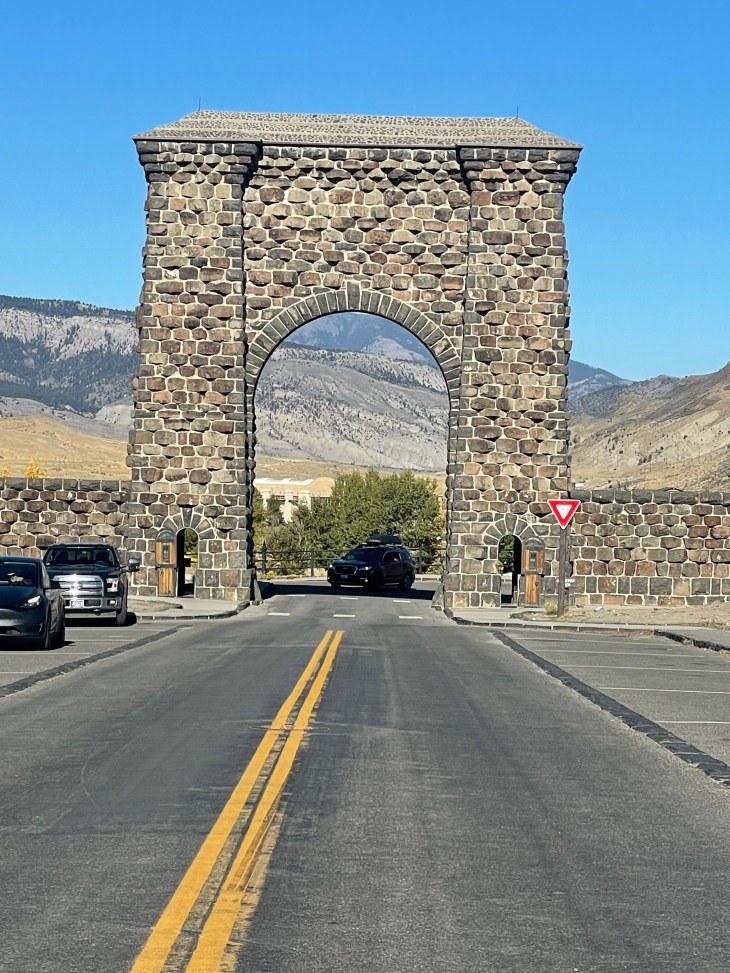
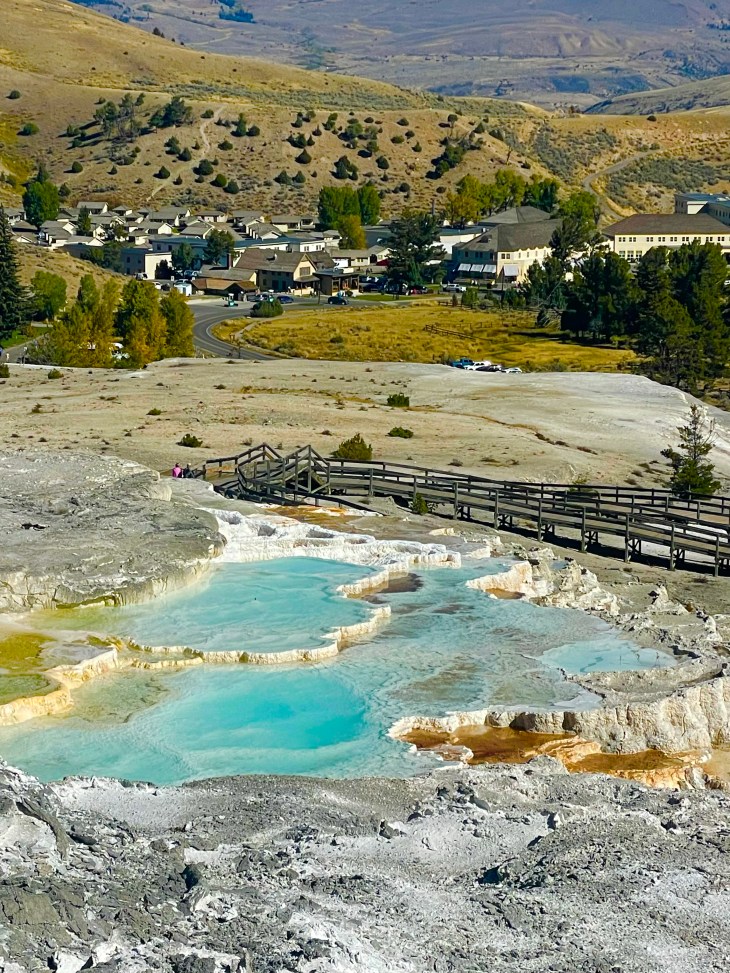





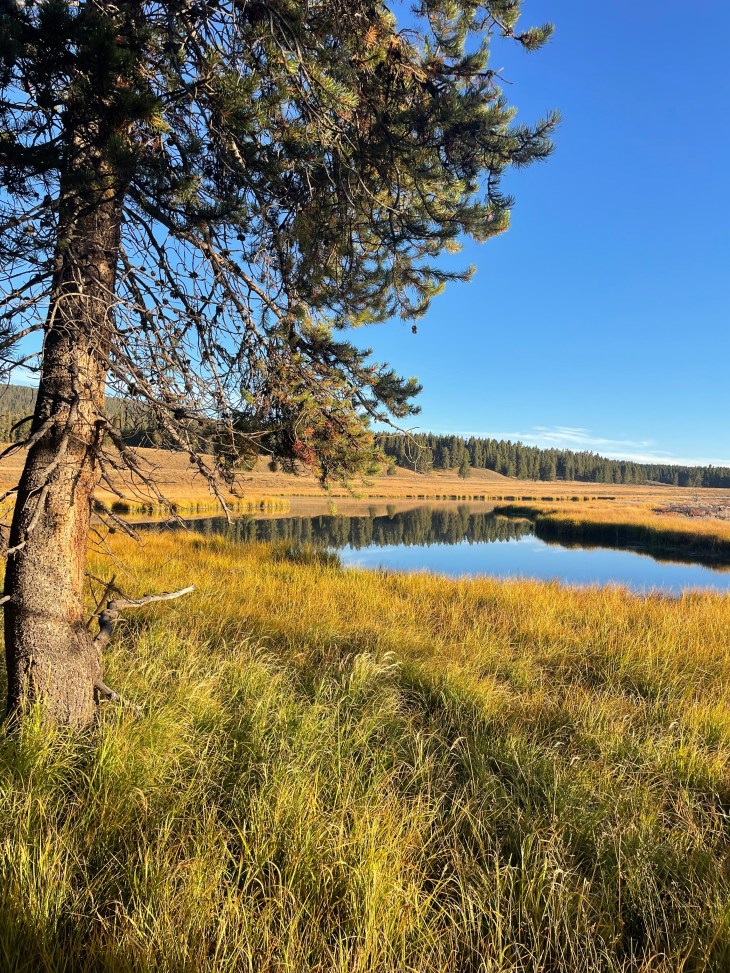
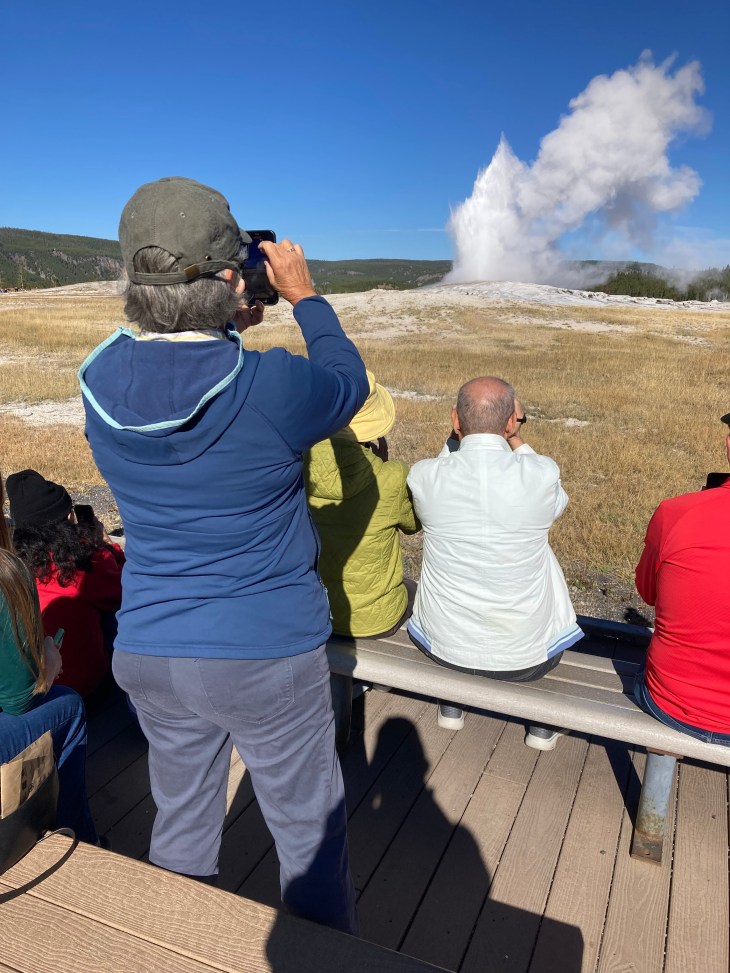
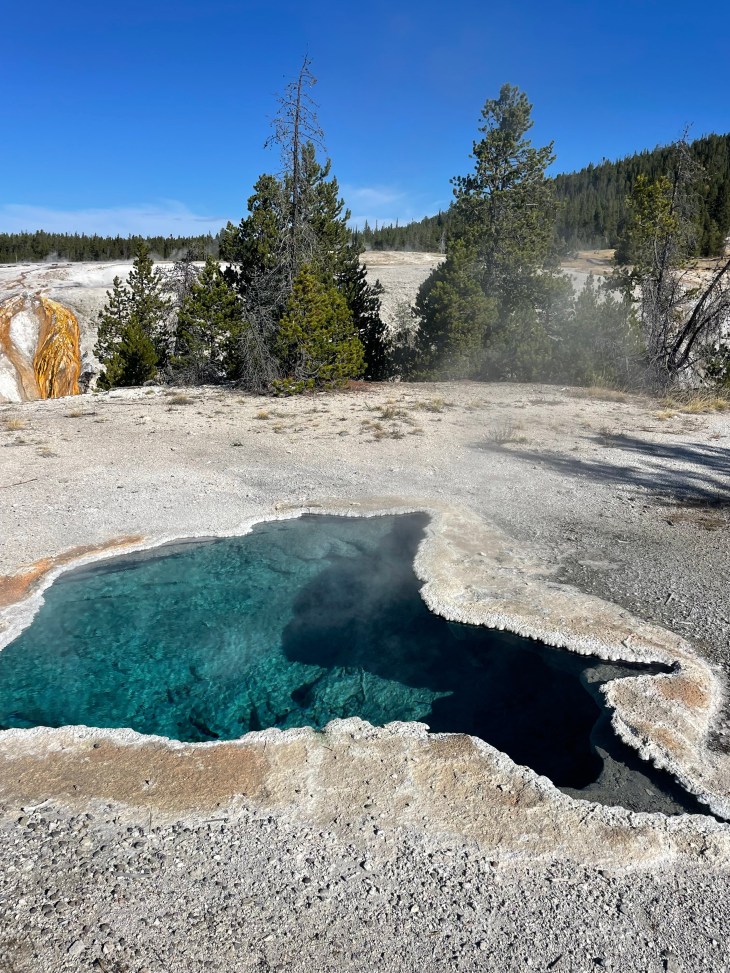

















16 Comments
I love the idea of staying at the Lake Lodge or elsewhere within the park when we make a return visit. We’ve stayed in Jackson in the past, but being able to enjoy the park in the early mornings and evenings would be wonderful!
October 10, 2025 at 11:10 pmYes that is exactly what we did. So quiet and peaceful and lots of wildlife in the early morning.
October 11, 2025 at 4:53 amWow, another great adventure! I just love reading your articles and love how you include history, great photos and pics of food! Will bookmark this adventure!
October 11, 2025 at 5:20 amAh thanks. Food is a big part of traveling! 🙂
October 11, 2025 at 6:23 amI can’t believe I STILL haven’t been to Yellowstone. One day though!! I love all your pictures!
October 11, 2025 at 5:25 amIt’s such a great place.
October 11, 2025 at 6:22 amAbsolutely love this. And the pictures are gorgeous. Definitely saving for my next trip!
October 11, 2025 at 6:04 amThank you so much!
October 11, 2025 at 6:22 amI am so jealous! The multi-week national Park trip is on my retirement bucket list. But I don’t want to do it on my own. I will probably book another Amtrak train trip through northwestern U.S. to see these parks. I loved taking this virtual trip with you!
October 11, 2025 at 7:55 amThanks. We talk about doing a RV Trip to hit all the parks we have yet to see. So many!
October 11, 2025 at 1:40 pmWonderful post and beautiful photos. Thank you so much for sharing and warm greetings from Montreal, Canada ❤️
October 14, 2025 at 5:15 pmThank you!
October 14, 2025 at 7:30 pmYellowstone NP is truly a gem. We visited the park back in 2012, stayed 3 days and we could have stayed longer to see more of the park. The wildlife, geisers, nature and geothermal features are so mesmerizing.
October 18, 2025 at 1:35 amI agree!
October 18, 2025 at 11:41 amI haven’t been since I was a kid. Time to go back to Yellowstone!
October 21, 2025 at 9:32 amIt’s amazing
October 25, 2025 at 11:55 am